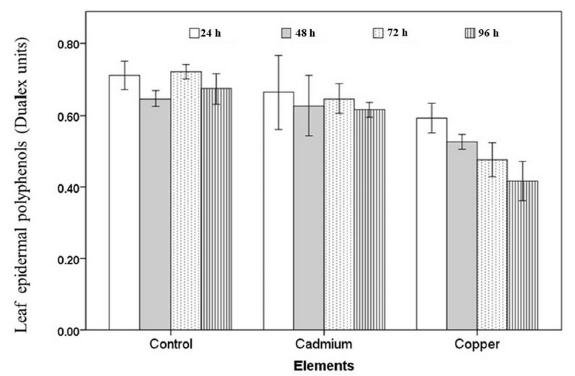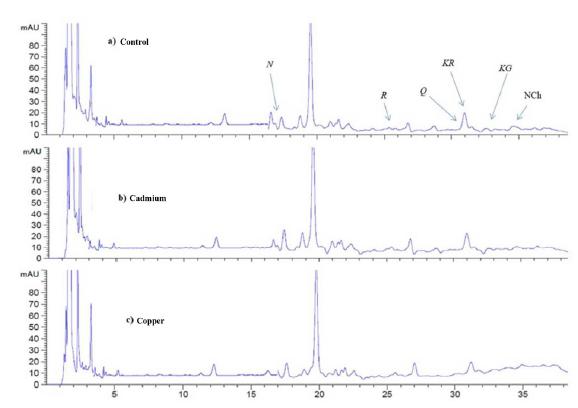ABSTRACT
The aim of the present work is to evaluate the changes on the phenylalanine ammonia lyase (PAL) activity, phenolic compounds accumulation and photochemical efficiency in leaves of P. glandulosa treated with Cd2+ (0.001 M) and Cu2+ (0.52 M) concentrations for 96 h under hydroponic conditions. The results showed that only leaves treated with copper had a decrease in photochemical efficiency and leaf epidermal polyphenols in P. glandulosa leaves after 96 h of exposure. On the other hand the reverse-phase HPLC analysis revealed higher levels of phenolic compound (gallic, vanillic and caffeic acids) and flavonoids (rutin and kaempferol-3-O-glucosides) in plant leaves from Cu and Cd-treatments with respect to control plants. Finally, highest increments in PAL activity was observed in extracts of leaves treated with Cu and Cd (about 205 and 284%), respectively, with respect to control plants after 96 h treatment. These suggest that activation of phenylpropanoid pathway represent a source of nonenzymatic antioxidants that protect at P. glandulosa against oxidative stress when exposed to cadmium and copper. Hence future studies are necessary to elucidate the participation of phenylpropanoid pathway in the reduction of metal toxicity in Prosopis species.
Key words:
heavy metals; Prosopis glandulosa; flavonoids; chlorophyll a fluorescence






